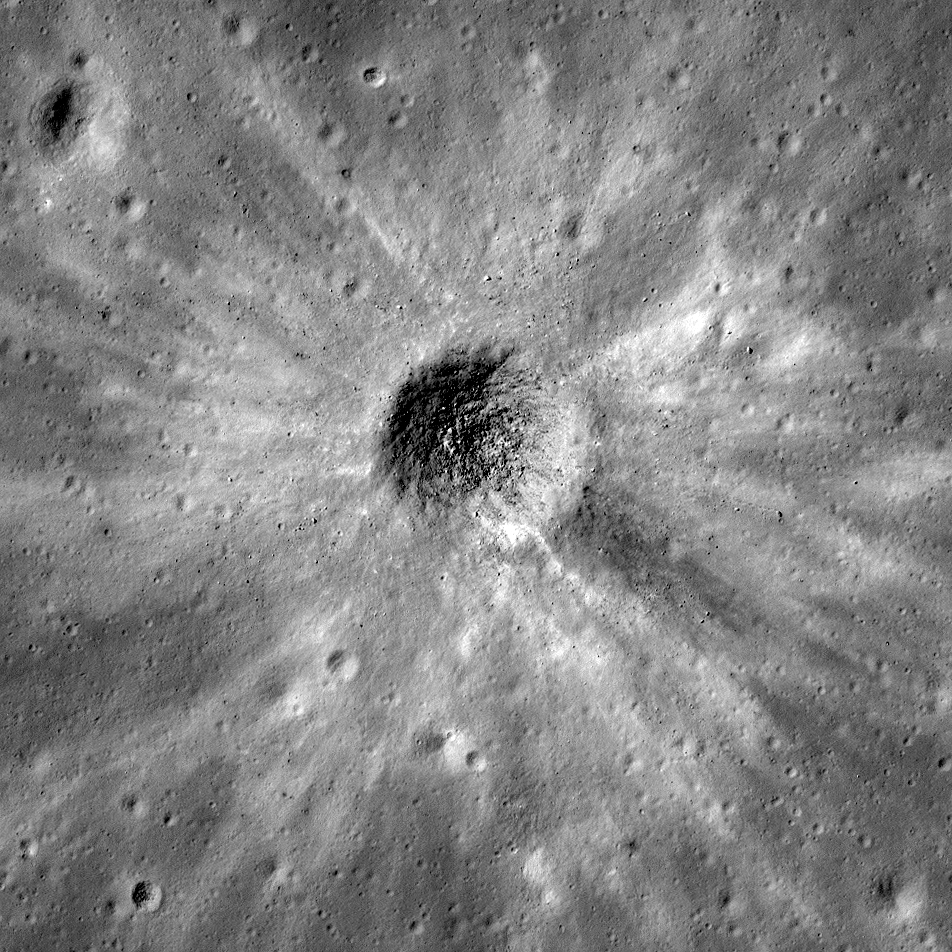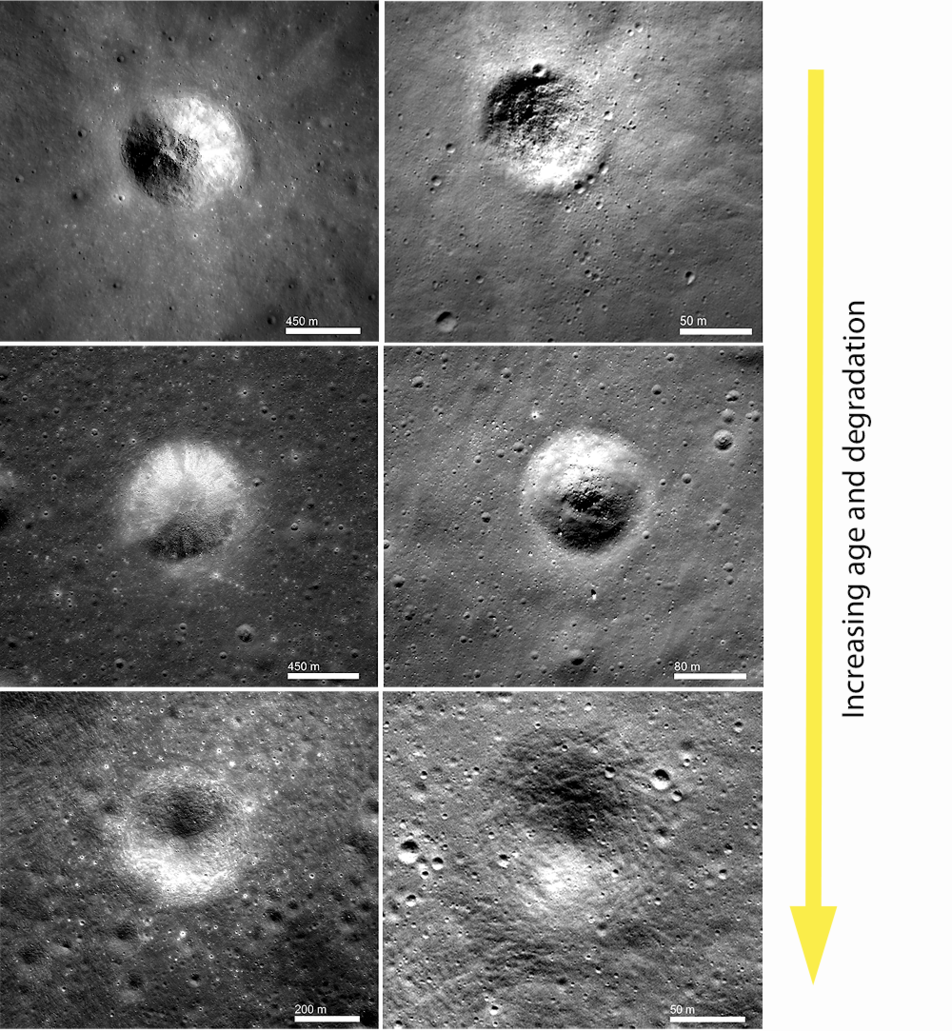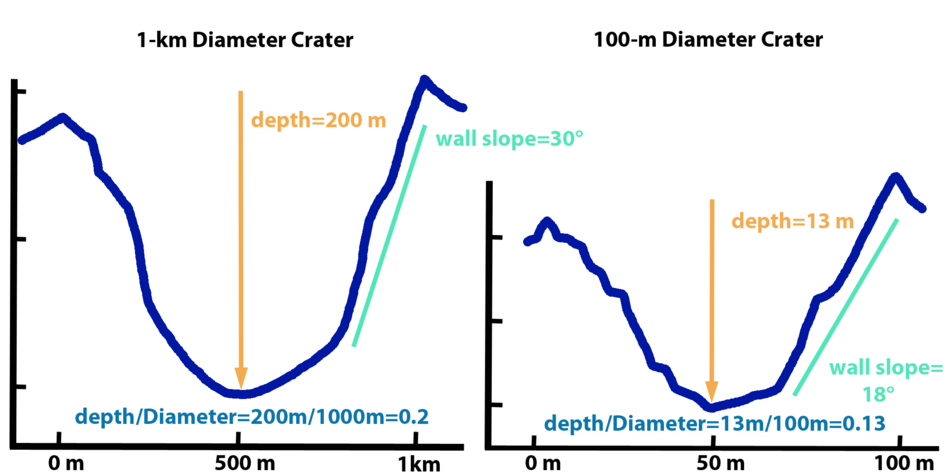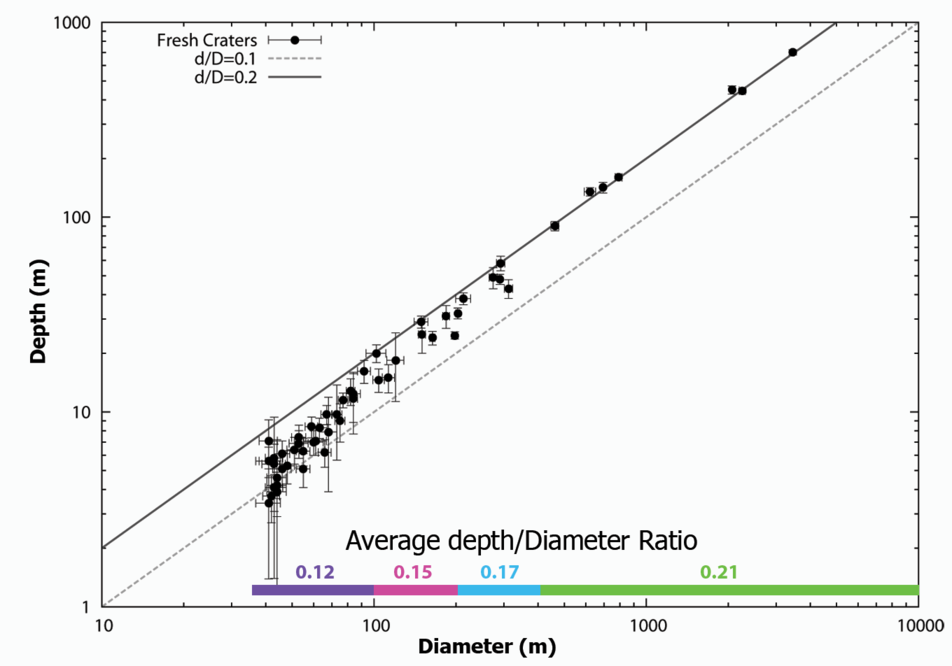
It has long been understood that the shapes of small craters (those that range in size from a few meters to several hundreds of meters in diameter) are influenced by the physical make-up of the materials in which they form. However, before LROC began mapping the Moon, we did not have sufficient high-resolution topographic information to take full advantage of the information these small craters can provide about the Moon's outermost surface structure and regolith. Now, the incredible three-dimensional details of these diminutive craters can be explored using digital terrain models derived from LROC images!
A new study by Stopar et al. in a special issue of Icaurs reports the shapes of 950 craters scattered across the Moon. Many of the craters in the study are extremely fresh (that is, they appear to have formed recently) and display finely detailed and extensive ejecta patterns (including the crater at the top of the page). As craters age and erode, these fine details are erased.

This new study examined how morphologic parameters like crater depth, diameter, and wall slope reflect how a crater formed and how it evolved (or eroded) over time. Beginning immediately after a crater cavity is excavated, poorly cohesive materials will begin to slide downward, shallowing both the crater and its walls. Craters remain deep, with steep walls, when the target material is strong or resists downslope movement and erosion.

By measuring the dimensions and shapes of fresh craters, Stopar and her colleagues found a surprising lack of any deep and steep craters on the Moon less than 200 m in diameter. This result was determined by measuring the depth and diameter of each crater, and taking a ratio of the two. When lunar craters are smaller than 400 m in diameter, their depth-to-diameter ratio (or, d/D) starts to decrease. The smaller the crater, the lower the ratio.

The lack of deep, small craters suggests a general lack of strong materials near or at the surface – instead, a loose soil (or regolith) is prevalent. Some of the studied craters formed on relatively young lava flows (less than 1 billion years old) and impact melt ponds, which are rockier, yet the shapes of superposed craters often suggest that the surface is covered with a degraded, less consolidated material like regolith. Though these craters were not as deep as expected for solid rock surfaces, they were a little deeper and steeper than craters of the same diameter found elsewhere on the Moon. This difference could reflect either the relatively young ages of the craters formed in impact melt deposits, a subtle difference in material strengths, or both. Future studies of lunar craters formed in materials with well-constrained ages might further improve on these initial interpretations.
The study also found other minor differences in crater shapes formed on different types of surface materials. For example, craters that formed on maria (ancient lunar lava flows) more frequently display benches (breaks in slope) in the crater walls, even though they do not have greater depth-to-diameter ratios on average. This type of wall morphology results from a weak layer (regolith) overlying a stronger material, such as a solidified lava flow.
Explore the area around this tiny crater:
Reference:
Stopar, J. D., M. S. Robinson, O. S. Barnouin, A. S. McEwen, E. J. Speyerer, S. Sutton, M. R. Henriksen (2017) Relative depths of simple craters and the nature of the lunar regolith, Icarus 298: 34-48, doi https://doi.org/10.1016/j.icarus.2017.05.022.
Links to other crater morphology featured images:
Published by J. Stopar on 20 October 2017